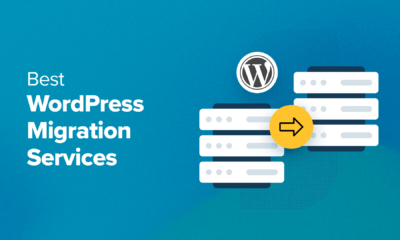TECHNOLOGY
Digitalised workplaces for optimised public services

Governments across the globe have long recognised the need to undertake a form of digital transformation. Many have been working for some time on transformation strategies designed to support the gradual adoption of digital technologies to increase productivity, improve efficiency, and enable better resource management.
Whatever shape these strategies took, they had one common goal – to create the next-generation digital infrastructure that would improve the delivery of services to citizens, from tailored health services and customised education to personalised administrative services and safer care for all. Two years ago, though, the pandemic changed everything.
Suddenly, governments’ mid- and long-term digital transformation objectives had become redundant. Government workforces quickly had to move to working remotely, while governments themselves had to adapt to find ways to continue delivering services to citizens. Fortunately, the wealth of digital tools available meant governments at all levels were able to shift their operations and service delivery online.
A short step
These weren’t the only things that shifted. Life under COVID changed societal expectations about how the world should work. More than half of public and private sector workers say they’d like to work from home at least three days a week now the worst of the pandemic is over, for example, while 55 percent of companies believe the pandemic has prompted a need for greater digitalisation.
To meet these expectations, governments must, once again accelerate their digital transformation strategies. Indeed, the current trend for hybrid working should be a short intermediate step toward a digital workplace.
In a digital workplace, advanced data and digital technologies will enable greater collaboration and communication among government employees, as well as between governments and citizens. This, in turn, will support new, more innovative, agile and – importantly – participatory forms of governing and delivering public services.
The European Commission explains that the digital workplace “will provide staff with the right IT tools, platforms, and services, enabling users to work and collaborate anywhere, anytime with fit-for-purpose security, and optimising their work experience and productivity. It will be adaptive and flexible to incorporate different types of users, new behaviours, and new technologies.”
Employees will use a single platform for unified communications, collaboration, mail, calendar and task management tools, all of which will be accessible from wherever – and whenever – people choose to work. Ultimately, the digital workplace will allow employees to work more flexibly, with the autonomy they need to work in a way that suits them best.
Full digitalisation
Achieving the benefits offered by the digital workplace means looking beyond immediate requirements for hybrid working, to ensure governments are in a position to meet the expectations of workers and citizens alike – long after the health crisis has become a distant memory. To this end, the Organisation for Economic Cooperation and Development (OECD) suggests that creating the digital workplace requires the full digitalisation of the public sector.
This digitalisation should apply as much as to external government processes as to internal operations. Self-serve digital portals should become standard for most government services that don’t require citizens to connect directly with government employees. This way, citizens will be able to access the services they need more quickly, from wherever they are, and whenever they need them.
And in those cases where citizens do have to connect to a government employee, those employees will have the digital tools they need to access information and respond to questions and requests in real time – a much better experience for both parties.
The evolution to a digital workplace will not be without its challenges, however.
Tackling challenges
Without the right technologies and digital tools, no digitalisation effort will ever reach its full potential. Governments must therefore consider a variety of technological challenges.
It’s vital, for instance, to ensure that employees and citizens always have secure access to applications and important data wherever they are via public, private, or hybrid cloud environments. Robust connectivity is essential, too, if employees and citizens are to have access to the network, applications, and data that power the digital workplace. IT silos, created over time by dividing responsibilities among multiple internal teams for desktop tools, citizen interfaces, and network and communications services, must be streamlined if they are to operate with any efficiency. And, of course, these must be protected at every point throughout the communication and collaboration process.
By addressing such challenges, governments can build a robust technology foundation for a digital workplace that will meet the needs of employees and enable them to deliver on the service expectations of citizens.
Building a foundation
Enabling efficient and effective communications and collaboration should be the overarching goal of any technology foundation upon which a government can build a digital workplace. But, if this foundation comprises multiple disparate elements, it won’t provide the seamless technology integration needed to support not only the organisation’s immediate requirements, but also a smooth transition to more complex workplaces in the future.
The ideal technology foundation should streamline communications between employees and allow more efficient communications with citizens. A single integrated environment is the right foundation for integrating speciality applications and enhancing communications with services such as common calendars and directories, chatbots, and more complex AI-powered cognitive technology.
Wired and wireless connectivity is a given, allowing both employees and citizens to access the networks that enable connections, support advanced applications, and facilitate the flow of information. But governments must also provide inclusive technology for those citizens who may not have the tools necessary for accessing digital services. This may involve the creation of publicly available digital access points – kiosks or service locations equipped with tablets or computers citizens can use to connect with government services.
And the entire communications and collaboration environment must be underpinned by ubiquitous advanced security practices, policies, and procedures, constantly updated to protect the network and the data it holds from potential intrusions – at every step of the value chain.
The pandemic had a significant impact on digital transformation in the public sector. Long-planned strategies were put on hold to ensure ‘business as usual’. And now, as life returns to normal, and organisations everywhere adopt hybrid working practices, it looks as though that impact is irrevocable. Governments should consider it an evolutionary step. The future of the public sector lies in the digital workplace. By overcoming potential challenges now, governments and citizens will enjoy more efficient and effective service delivery for the good of all.
Source link













You must be logged in to post a comment Login